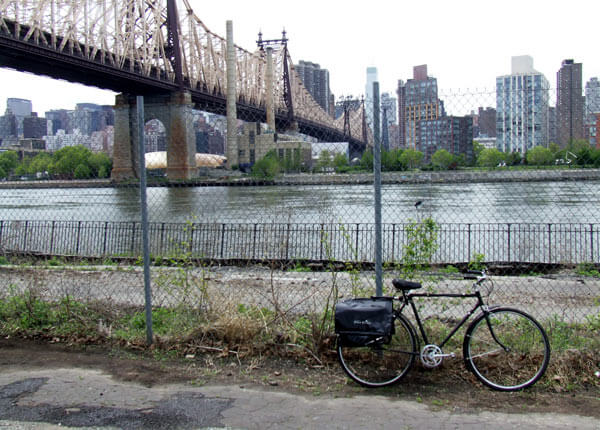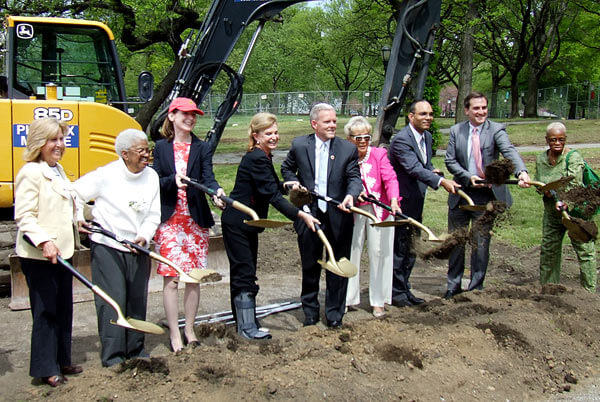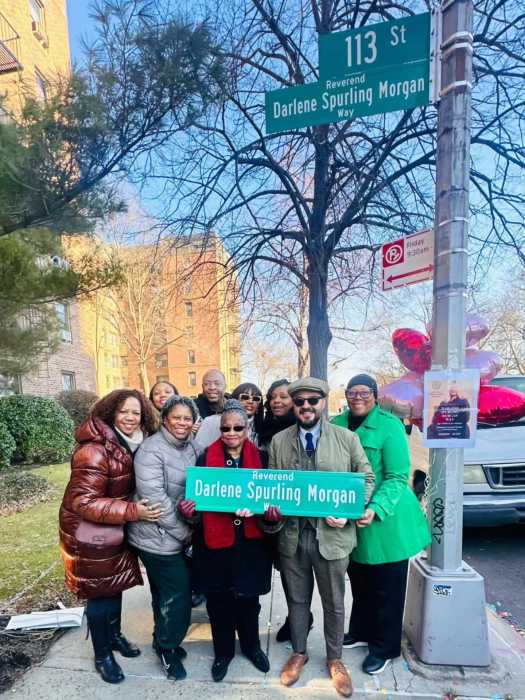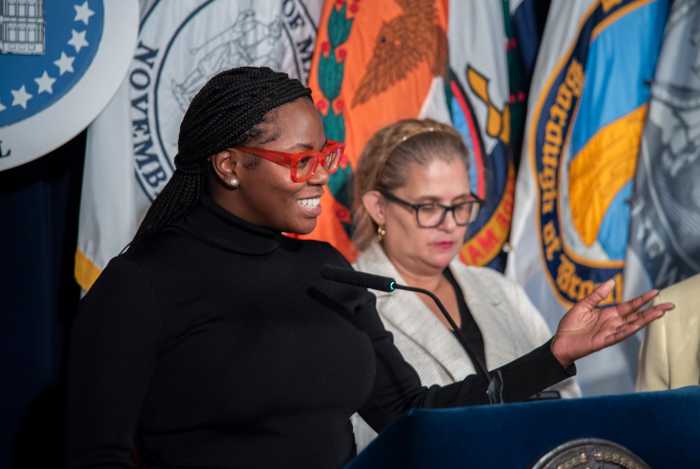By Karen Frantz
Queensbridge Park’s seawall is getting a makeover that many residents and elected officials are saying is long overdue.
The seawall as it stands now is crumbling, with some areas sunken into the ground and tree roots bursting through the cracks. The waterfront is blocked off by a chain link fence, marring the otherwise impressive view of the Manhattan skyline and the Queensborough Bridge.
But several city, state and federal legislators, city Parks Department officials and community activists gathered at the park Friday to announce that after a multi-year battle, the city is breaking ground on a restoration and improvement project of the seawall that will beautify the waterfront.
“Remember how beautiful it was to walk on warm summer nights and see the water rolling back. Remember children playing in all the park, not being afraid to walk in certain parts of the park?” said Councilman Jimmy Van Bramer (D-Sunnyside), evoking the park’s past glory before the seawall deteriorated.
“Today we begin restoring this park to what it used to be,” he said.
Van Bramer was joined at the news conference by U.S. Rep. Carolyn Maloney (D-Astoria), Council Speaker Christine Quinn (D-Manhattan), state Sen. Michael Gianaris (D-Astoria), Borough President Helen Marshall, Parks Commissioner Veronica White and others.
Van Bramer was instrumental in securing funding for the restoration project, which will cost $6.65 million and is expected to be completed next summer. The city Economic Development Corp. will manage the project.
The new waterfront will include a 6-foot-wide promenade with benches and plantings and a wharf at the north end. Large rocks, which will absorb and deflect waves and slow down erosion, will be used to protect the shoreline, .
Maloney said the restoration of the seawall will not only help beautify the waterfront but will help to protect city infrastructure. She said a deteriorating seawall allows water to corrode electrical equipment for the F train that runs under the park.
“All those delays on the F train [are] coming from this seawall,” she said.
She also said the seawall will help to protect the city against the effects of climate change, which the city felt during Hurricane Sandy.
The congresswoman said the fight to get the restoration project green-lighted was a years-long process. She first formed a task force in 2002 with Marshall to look at repairing the seawall, and after some struggle the federal government was expected to complete the project.
But in 2005 the city said it wanted to handle the project yet stalled for five years.
“Our young people are going to be able to break down that fence and enjoy the waterfront,” she said. “And we’ve all be working on this for a long, long, long time.”
Reach reporter Karen Frantz by e-mail at kfrantz@cnglocal.com or by phone at 718-260-4538.





































